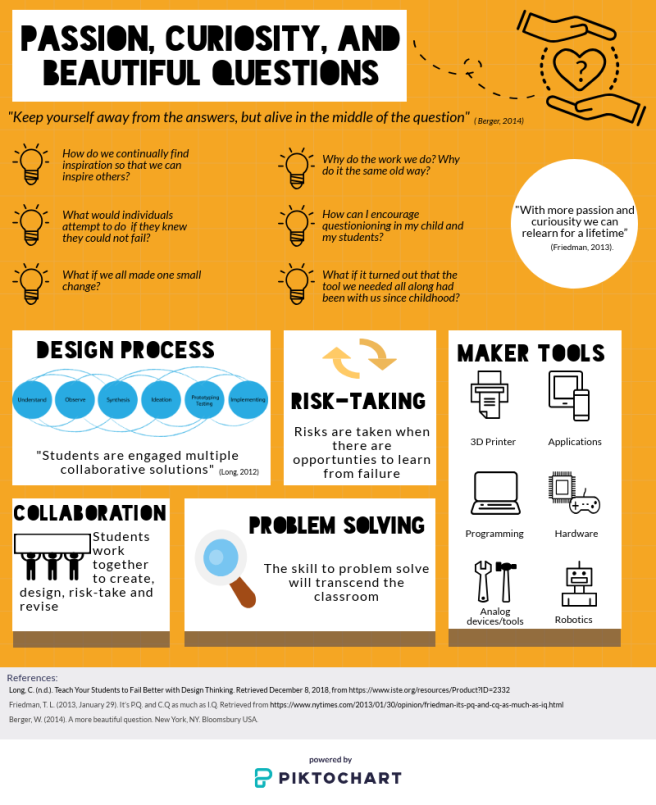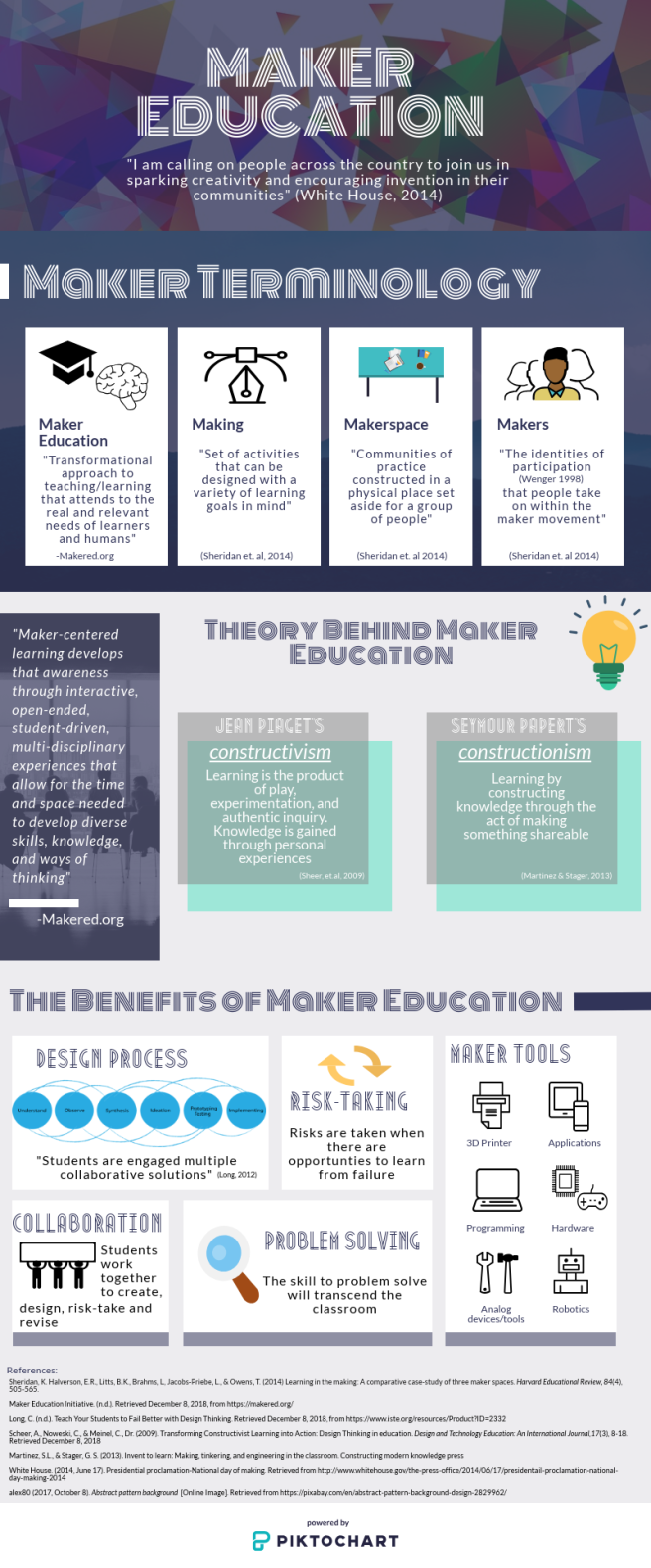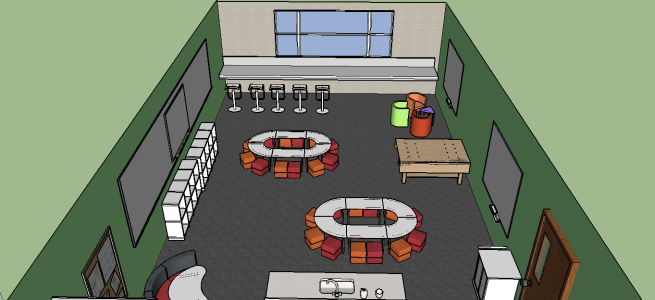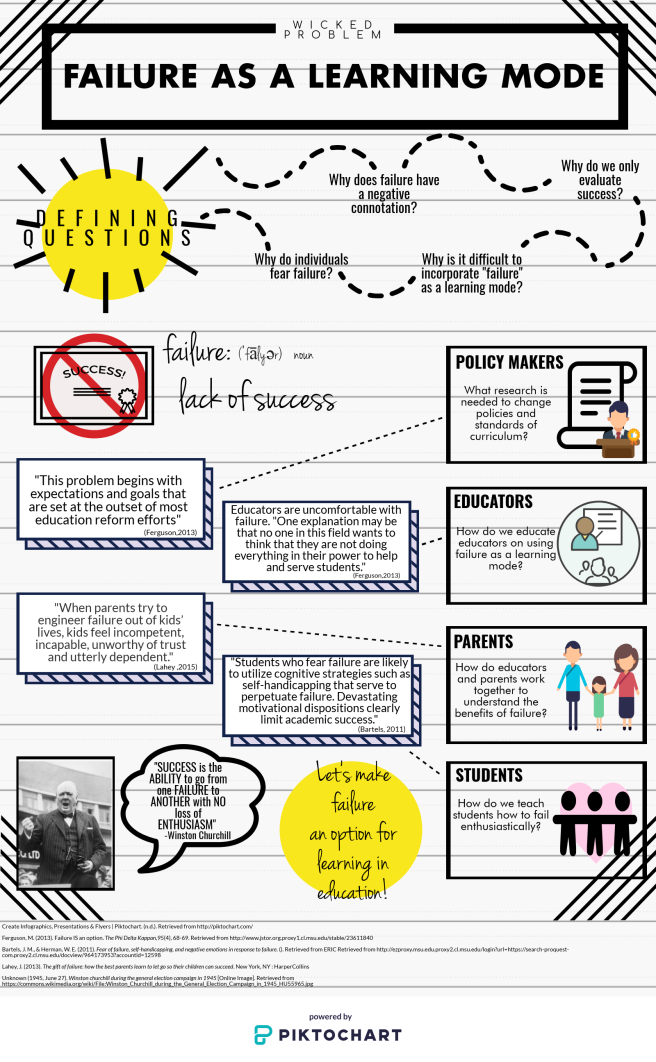As an educator, we are programed to consciously reflect on our teaching practice. We can reflect on things such as classroom management, lesson delivery, philosophies, implementation of new ideas, and so on and so forth. We tweak, remove, add and change the things that we do to better our practice and our students. Something that is difficult to change, and rather costly, is the design of our classroom. We are given 4 empty walls, sometimes with a whiteboard or Smart Board, furniture that may or may not fit within those 4 walls, and some places to store our items that are not in use. We are forced to design our classroom with the “front of the room” in mind (usually where the Smart Board is).
This week, as a part of one of my graduate courses at Michigan State University, I was asked to reflect on my original classroom design through 21st century eyes. I used a program called Sketch Up to redesign/reimagine my classroom to encourage collaborative learning, maker spaces and personalized learning.
The Current Design:
This slideshow requires JavaScript.
According to The Third Teacher: 79 Ways You Can Use Design to Transform Teaching & Learning, “If we truly believe that creativity is an essential ingredient in a child’s development, then we need to shift completely away from the “cells and bells” model of school design. So the other fundamental question we should be asking is: Does this learning environment support a child’s natural instinct to learn through creation and discovery?” (OWP/P Architects, 2010, p. 56). When reimaging my classroom, I wanted to address the major issues and limitations of my classroom. Large, bulky, immobile furniture, awkward wall and counter space, limited pathways for mobility, lack of makers/collaborative space, and limited areas to work were the few apparent items. I turned to research to help tackle these room design issues. In a study by Barrett, Zhang, Moffat & Kobbacy (2013) they stated that students worked better with natural light, furniture that was purpose-built that could be moved around the room to accommodate the range of learning activities, and walls and floor colored matter. More specifically, cool bright colors seemed best for younger students. Taking all of this into consideration, I reimagined my classroom.
The Reimaged Classroom:
This slideshow requires JavaScript.
In the reimagined classroom, the saying “Less is More” is very apparent. Less bulky furniture created more space for students to move about in the classroom. The counter space was used for more collaborative or personalized space to work, where natural light comes in through the window. A large table, completed with storage on the bottom, is used as a maker’s space where creation and discovery can happen. Comfortable seating facing a white board provides a space for students to work collaboratively for learning. Tables that can be manipulated and rearranged around the classroom can allow students to work in specific small or large groups. The height of the desks can be adjusted if students would like to sit on the floor or stand up to complete a task. Personalized feedback has its own area where a teacher and student can discuss a child’s feedback away from other learners. Lastly, two of the four walls were painted a bright cool green to providing a warm and inviting environment.
To make this reimagined design come to life, many factors come into play. Where will the funds come from and the manpower to transform this room into a 21st century design? Teachers can research grants to apply for that would help the design come to life. They can also reach out to organizations such as Parent Teacher Association (PTA), who put on fundraisers throughout the school year to support their school. Parents, students, teachers and community members could volunteer their time to transform the classroom that would support the learning of the whole child. Summer vacation is a more beneficial time to complete a project like this. It gives time for the teacher to organize their belongings and remove items that could get in the way of the project. Removal of furniture, moving in the new furniture and a fresh coat of paint has a positive impact on the way students can learn. Financial aspects for this project can be quiet scary at first (especially for all the modern furniture ranging from $75-$3,000 for an individual item) but the benefits of redesigning the classroom that will provide an engaging learning environment for our future individuals is priceless.
References:
Barrett, P., Zhang, Y., Moffat, J., & Kobbacy, K. (2013). A holistic, multi-level analysis identifying the impact of classroom design on on pupils’ learning. Building and Environment, 59, 678-689. doi: http://dx.doi.org/10.1016/j.buildenv.2012.09.016
OWP/P Architects, VS Furniture, & Bruce Mau Design. (2010). The third teacher: 79 ways you can use design to transform teaching & learning. Retrieved from http://thethirdteacherplus.com/s/Ch2-TTT-for-Web-0y6k.pdf



